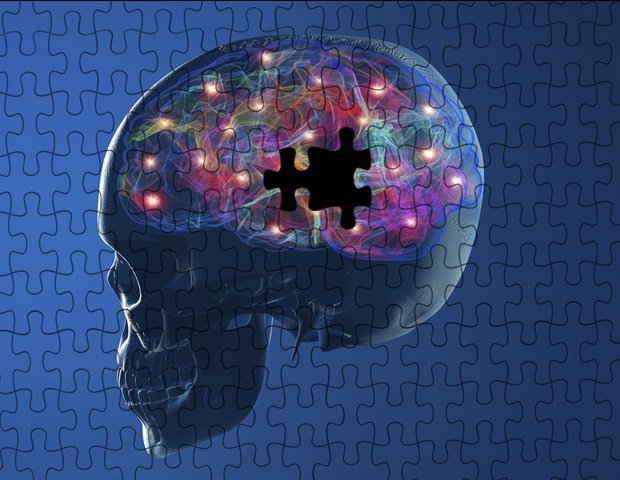The field of non-pharmacological interventions for the treatment of individuals with Parkinson’s disease (PD) is reaching maturity and has the potential to substantially improve patient care in the future. A supplement to the Journal of Parkinson’s Disease (JPD), published by IOS Press (now part of Sage), captures a wealth of information on non-pharmacological interventions addressing physical and mental perspectives as well as views on access to care.
The voices of people with Parkinson’s are being heard more and more, fuelling a more holistic approach to the treatment of this neurodegenerative disease. “We are increasingly witnessing participatory research approaches in which patients are involved in designing novel treatment programs, preparing consensus statements on the delivery of multidisciplinary care, and in defining outcome measures,” says co-Guest Editor of the supplement Elke Kalbe, PhD, Medical Psychology | Neuropsychology and Gender Studies & Center for Neuropsychological Diagnostics and Intervention (CeNDI), University Hospital Cologne, and Medical Faculty of the University of Cologne, Cologne, Germany.
Co-Guest Editor Bastiaan R. Bloem, MD, Radboud University Medical Centre, Donders Institute for Brain, Cognition and Behaviour, Department of Neurology, Centre of Expertise for Parkinson and Movement Disorders, Nijmegen, Netherlands, and co-Editor-in-Chief of JPD, adds, “Coupled with the empirical observations of clinicians who continually face the limitations of pharmacotherapy and the growing support of evidence that comes from adequately designed research studies, these developments yield a much wider perspective on patient care than previously endorsed.”
Non-pharmacological interventions for people with PD have traditionally been regarded as supportive measures to primarily alleviate motor symptoms. While physiotherapy, speech-language therapy, and occupational therapy have gradually become integral parts of the overall management of PD, other non-pharmacological interventions like cognitive training, cognitive behavioral therapy, and art or light therapy are only just beginning to be included in therapy guidelines.
Developments that are highlighted in this supplement include:
- Expansion of the types of interventions
- Standardization of intervention protocols
- Development of digital forms of interventions
- Scientific evaluation of the feasibility and effects of the interventions
- Understanding of underlying mechanisms of therapy-induced plasticity processes
- Integration of non-pharmacological interventions in patient care concepts
- Transition from merely symptomatic to preventive therapies
The field is shifting from tackling motor to non-motor symptoms such as stress. The article “Alleviating Stress in Parkinson’s Disease: Symptomatic Treatment, Disease Modification, or Both?” reviews the evidence on stress-alleviating strategies such as exercise and mindfulness-based interventions in PD, focusing both on symptomatic effects and disease-modifying effects. The article sheds light on the impact of stress and stress-alleviation on clinical symptoms and the pathophysiology in PD.
In people with PD, stress is thought to play a particularly important role. Not only does acute stress aggravate the symptomatic manifestations of the disease, such as tremor, dyskinesia, or freezing of gait, recent evidence in animals also suggests that chronic stress may influence the degree of nigro-striatal cell loss.”
Rick C. Helmich, MD, PhD, Lead Author, Radboud University Medical Centre, Donders Institute for Brain, Cognition and Behaviour, Neurology Department, Centre of Expertise for Parkinson and Movement Disorders, Nijmegen, the Netherlands
The review article “Pain and the Non-Pharmacological Management of Pain in People with Parkinson’s Disease” describes pain and the biopsychosocial model of pain. It explores how pain is classified in PD and describes the three main types of pain: nociceptive, neuropathic, and nociplastic pain. Lead author Natalie Elizabeth Allen, PhD, Discipline of Physiotherapy, Faculty of Medicine and Health, The University of Sydney, Australia, notes, “This background provides context for a discussion of non-pharmacological pain management strategies that may aid in the management of pain in people with Parkinson’s disease including exercise, psychological strategies, acupuncture and massage. While there is little PD-specific research to inform the non-pharmacological management of pain, findings from current PD research are combined with that from chronic pain research to present recommendations for clinical practice. Recommendations include assessment that incorporates potential biopsychosocial contributors to pain that will then guide a holistic, multi-modal approach to management.”
Other articles in the supplement highlight issues around the implementation and provision of adequate access to multidisciplinary care, the optimization of digital health literacy to enable benefits of technological approaches, innovative and valid outcome measures to capture subtle changes in symptoms and wellbeing, and arts-based interventions as emerging therapeutic modalities that may uniquely tackle aspects of the disease that conventional treatments cannot address.
Co-Guest Editor Lorraine V. Kalia, MD, PhD, Krembil Research Institute, Edmond J. Safra Program in Parkinson’s Disease and the Morton and Gloria Shulman Movement Disorders Clinic, Toronto Western Hospital, University Health Network, Toronto, Canada, and co-Editor-in-Chief of JPD, says, “We see that clinicians are no longer limiting their focus to traditional non-pharmacological approaches for only motor symptoms. For example, they are embracing preventive interventions, such as exercise, as well as arts-based interventions, such as dance and visual arts, which have the potential to offer a holistic approach to manage various motor and non-motor symptoms of PD while also enhancing overall wellbeing. In addition, novel approaches to impact cognitive impairment and affective disorders are emerging, with technology playing an important role in the delivery and outreach of non-pharmacological interventions.”
“The scope of non-pharmacological interventions is widening, and healthcare professionals should prioritize these areas in their practice. The field of non-pharmacological therapy is clearly reaching clinical and scientific maturity and has the potential to substantially improve patient care in the future,” concludes co-Guest Editor Alice Nieuwboer, PhD, KU Leuven, Department of Rehabilitation Sciences, Research Group for Neurorehabilitation (eNRGy), Leuven, Belgium.
Source:
Journal reference:
Kalbe, E., et al. (2024). Special Issue: Non-Pharmacological Interventions for People with Parkinson’s Disease: Are We Entering a New Era? Journal of Parkinson’s Disease. doi.org/10.3233/JPD-249009
